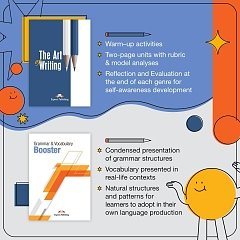Learners find it challenging to familiarise themselves with another language, let alone develop their reading skills. So, what can we, as teachers, do to make the reading process easier for our students?
Strategies for developing students’ reading ability at an early age:
1. Lower your demands.
Do not place too many reading demands on younger learners, who are at an early stage of reading development.
2. Boost students’ confidence.
Students should understand and get familiar with the idea that they cannot always be expected to know every word in a passage. The use of support materials (e.g. pictures, drawings, and charts) will help them feel confident and show them what it is important to concentrate on.
3. Help students to develop reading strategies.
Our go-to reading strategies:
1. Predicting– it is useful to encourage children to predict what they think might come next in a text. This means that they can then read on to check whether their expectation is true or not.
2. Working out the meaning from context. Although the teacher might like to teach “words” before the children read something, s/he also needs to encourage them to use pictures and their general knowledge about a topic to work out the meaning of unfamiliar words.
3. Recognizing discourse patterns and markers. Words such as ‘and’, ‘then’, ‘but’ give important signals about what is coming next in a text. This is especially important when reading a story or a set of instructions.
Activities that develop reading skills:
1. Rearranging Sentences / Words
Students put sentences into the correct order from a text that you have cut up.
For younger learners, you can try rearranging words to produce a meaningful sentence.
e.g.: Put the words in the correct order: eat cake like I to
2. Spot the Difference
Students identify differences between words and which ones do not belong to the rest of the group.
e.g.: Which is the odd one out? dog, cat, horse, pen
3. Using the Title
Students look at the title and say what they think the text will be about / make a list of words they think will occur in the text.
4. Matching Two Halves of a Sentence
Students produce a meaningful sentence by matching two halves of a sentence / two clauses.
5. Sound Snap
Students play the well-known card game – saying “Snap” when the words on each card rhyme.
6. Matching Pictures and Captions
As the students read, they match what they read to the correct picture.
7. First Lines
The students read the first line(s) of a text and then say what they think comes next.
8. Picture Talk
The use of picture prompts encourages students to speculate about what they are going to read.
See here how you can use our readers in the classroom!
.png)






